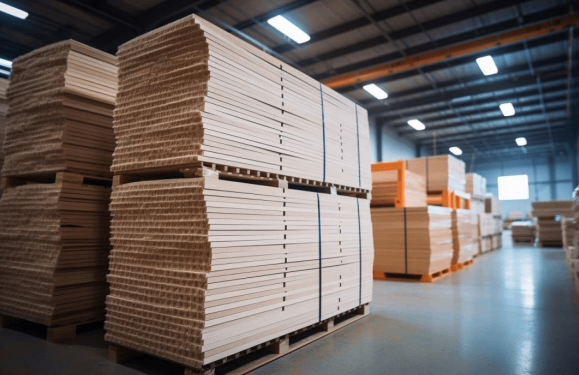As an important component of building materials, plywood holds a special position in the Vietnamese building materials market. In recent years, this market has undergone many changes, and its development trends have attracted widespread attention.
In terms of market size, in 2023, the Vietnamese plywood market ended the consecutive two-year decline since 2020 and achieved growth, reaching a certain level of market size. Over a long period of time, market consumption has shown an active growth trend. Although the growth rate slowed down between 2021 and 2023, it generally remained on an upward trend. In terms of production, in 2023, plywood production grew rapidly driven by export prices. However, after reaching the production peak in 2021, production declined between 2022 and 2023.
Image Source:699pic.com
The supply and demand situation of plywood in Vietnam is also quite complex. On the demand side, plywood is mainly used in furniture manufacturing, construction and other fields. Previously, due to the strong demand for the production of outdoor furniture and outdoor wood products, the plywood market had sufficient orders. But starting from 2022, the market situation took a sharp turn for the worse. For Vietnamese plywood, which takes the United States and the European Union as its main export markets, due to these countries facing high inflation and economic recession, consumers prioritize ensuring the consumption of food and daily necessities and reduce their spending on non-essential items such as furniture, resulting in a significant reduction in orders for Vietnamese plywood. In provinces such as Thanh Hoa, Quang Ngai and Dong Nai, many woodworking workshops have been forced to suspend operations. For example, Hải Oanh Forest Products Import-Export Company's orders almost stopped starting from 2022, and it has an inventory of about 1,400 cubic meters of laminated wood panels, with a value of about 20 billion VND (approximately $820 million USD). Mộc Quyết Thắng Co., Ltd. in Dong Nai Province is also facing a sluggish plywood market, with orders reduced by more than 50%. On the supply side, despite the weak demand, some enterprises expanded production when the market was better before, leading to overcapacity and a serious backlog of inventory.
In terms of trade, Vietnam is both a major exporter of plywood and has a certain scale of imports. In 2023, the export volume of Vietnamese plywood rebounded, and it exported approximately a certain number of cubic meters, showing a significant increase compared to 2022. In the long run, the export volume showed a significant growth trend between 2012 and 2023, reaching its peak in 2021. The United States is the largest export destination for Vietnamese plywood, accounting for a large proportion of the total export volume, followed by Malaysia and Japan. In terms of export prices, the average export price in 2023 increased compared to the previous year, but over a longer period, there is a slight downward trend in export prices. In terms of imports, after experiencing a two-year decline, the import volume of Vietnamese plywood increased significantly in 2023. China is the main source of plywood imports for Vietnam, accounting for more than half of the share. In terms of import prices, the average import price in 2023 decreased compared to the previous year, and from 2012 to 2023, the price trend was relatively stable.
Imported products from abroad also pose competition to the Vietnamese domestic market. Taking China as an example, as the main source of imports, its plywood products have occupied a large share in the Vietnamese market due to factors such as price and quality. In terms of price, because China has a complete wood supply chain system, the raw material procurement cost is low, and the cost advantage brought by large-scale production makes the price of Chinese plywood products often lower than some similar products in Vietnam. In terms of quality, Chinese enterprises pay attention to technological innovation and quality control, and the produced plywood performs well in terms of strength, flatness, environmental protection performance, etc. For example, the E0-grade environmentally friendly plywood produced in China has a formaldehyde emission far lower than that of some domestic products in Vietnam, meeting the needs of Vietnamese consumers for healthy and environmentally friendly products. In addition, plywood products from other countries such as Indonesia and Malaysia also occasionally enter the Vietnamese market. They compete with Vietnamese enterprises in specific product areas by virtue of their unique resource advantages or production processes. The Vietnamese plywood market is at a crucial development juncture, and market participants need to pay close attention to market dynamics, the global economic situation, and changes in industry trends in order to seize opportunities and meet challenges in the complex market environment.



